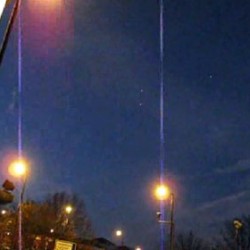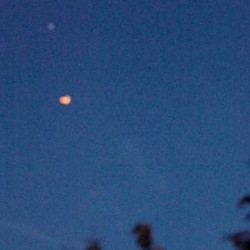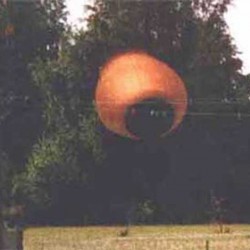This page is still in progress – a draft copy if you like…
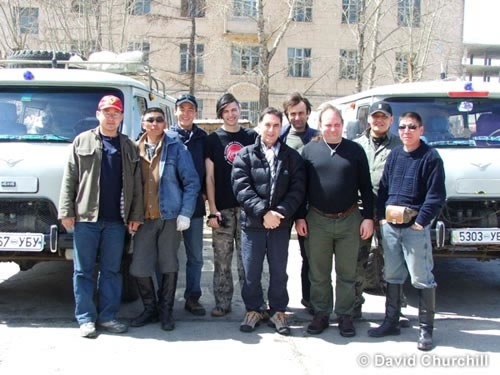
In May 2005, Cryptoworld joined forces with the CFZ (Centre for Fortean Zoology) and travelled to Mongolia to look for the legendary Mongolian Death Worm.
The expedition lasted four weeks, and covered several thousand miles, crossing open grass land (Steppe), rocky desert, mountain passes and the impossibly hostile Gobi desert (read about our dust-storm adventures below!).
Mongolian Death Worm – A History.
The Death Worm: approximately five-foot (1.5 m) long, dwelling in the vast and inhospitable expanses of the Gobi Desert. The creature, known to Mongolian nomadic tribesmen as the allghoi khorkhoi (sometimes given as allerghoi horhai or olgoj chorchoj) and roughly translates into English as “intestine worm” for its resemblance to a sort of living cow’s intestine. Apparently red in colour, sometimes described as having darker spots or blotches, and even said to bear spiked projections at both ends, the khorkhoi is reputedly just as dangerous as its alarming appearance would suggest, squirting a lethal corrosive venom at its prey and capable of killing at a distance of several feet by discharging a deadly electric shock.1
The first known reference in English seems to come from Professor Roy Chapman Andrews’ 1926 book On the Trail of Ancient Man. Although the American Palaeontologist (apparently the inspiration for the Indiana Jones character) was not entirely convinced by the tales he heard at a gathering of Mongolian officials: “None of those present ever had seen the creature, but they all firmly believed in its existence and described it minutely.”
Since then, there has been numerous reports and stories, but no official search has ever been conducted by Mongolia, although there are stories of Russian scientists investigating the creature during the time Russian held power (1921 – 1992).
In 1990 and 1992, the Czech Explorer Ivan Mackerle mounted two expeditions after he first learned about the creature from a female student from Mongolia. Mackerle had told her about a diving expedition he had made in search of the Loch Ness Monster, she then told him in a conspiratorial whisper, “We, too, have a horrible creature living in Mongolia. We call it the Allghoi khorkhoi monster, and it lives buried in the Gobi Desert sand dunes. It can kill a man, a horse, even a camel.”
Intrigued, Mackerle set out to learn more about this Mongolian monster, and after Mackerle and his colleagues befriended some Mongolian nomads, they heard what is possibly the most commonly told story and description of the Deathworm.
The Story goes: After a couple of bottles of Mongolian vodka had loosened the nomads’ tongues, they said that the worm squirts an acidic liquid that immediately makes anything it touches turn yellow and corroded. The nomads also said that the colour yellow attracts the Allghoi khorkhoi. They then told Mackerle the story of a young boy who was playing outside with a yellow toy box. A death worm apparently crawled inside, and when the boy touched the worm, he was killed instantly. The boy’s parents found his body and a wavy trail leading away in the sand. They knew instantly what had happened, and followed the trail to kill the worm. But the story goes that instead of them killing it, it actually killed them instead.3
Then in 2003, Adam Davies and Andy Sanderson from Extreme Expeditions travelled to Mongolia to have a look for the fabled beast (you can read their full account on the Fortean Time website). But despite their lack of success, and the fact that they found no scientific proof of its existence, they really believe that it’s out there somewhere. “I know it’s out there and I wish the next explorer the best of luck in proving me right. Who knows? I might even have another go myself,” said Adam.4

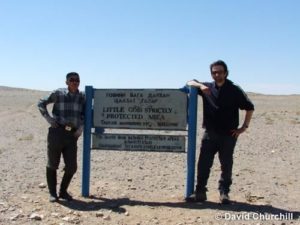
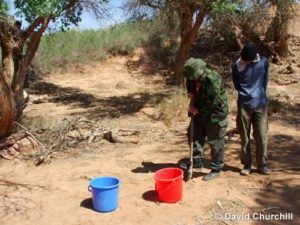

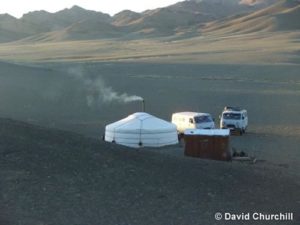

Weird Weekend 2003 – An Idea
Later that year in August of 2003 at the famous Weird Weekend, the CFZs yearly weekend conference of all things Cryptozoological, Fortean and Weird, there was talk of an expedition to Mongolia to follow up and hopefully prove Adam right!
So, over the course of the weekend and after several pints of ale, I had talked to Richard Freeman and somehow found myself on the expedition. In true CFZ style, nothing had been confirmed, but there was a rough plan for a three to four week expedition in May 2004, but with other projects and work commitments, this eventually turned into May 2005, and the rest as they say – is history!

